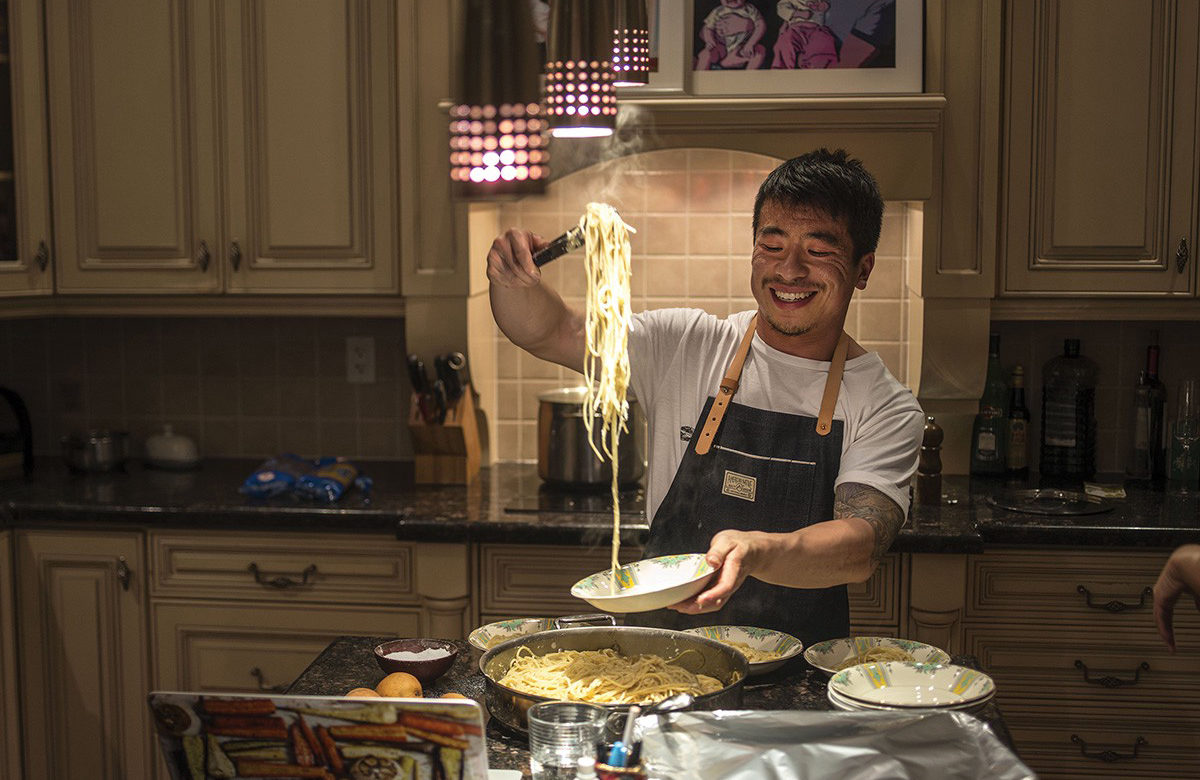“What is Canadian food?” Karon Liu asks, chopping broccoli and red pepper into bite-sized pieces. “We’re a country of immigrants, not a monoculture.”
We may call poutine — or, even less glamorously, Kraft Dinner — our national dish, but pinpointing what fare is truly “ours” isn’t easy in a country as diverse as Canada, where borscht, spaghetti, and pho are all folded into the palette. For many, the most familiar artifact of the country’s multiculturalism manifests in the many different foods we eat.
Underneath it all, cooking is storytelling — and everyone has a story to tell.
For Liu, food writing means more than showing up to restaurant openings and gorging on good food. It’s an entry point into conversations about politics, economy, and geography, a way to share history, identity, and culture. Even a list of ingredients can evoke nostalgia — just as apples and cinnamon bring back memories of baking Apple Brown Betty with my mother, chewing on apple peels and licking the sugar-filled Pyrex while she followed her own mother’s recipe.
Cooking, in other words, keeps memories alive.
I meet Liu in the lobby of the Toronto Star’s 1 Yonge Street headquarters before heading up to the fifth-floor test kitchen, located just a few steps from the newsroom. On this grey, January morning, Liu is preparing rice noodles and veggies in a spicy peanut sauce for his biweekly column, “Single Adult Diner,” in which Liu cooks up meals for one — ranging from Sloppy Joes to vegetable carbonara.
The Toronto Star test kitchen looks and feels like a clean, white laboratory. The walls are peppered with shelves holding colourful dishware and eclectic cookbooks like Yotam Ottolenghi’s Plenty. It may well be Canada’s only newspaper-based test kitchen, where every recipe the paper publishes is tried and tested — a part of Liu’s job since he took over for award-winning food writer Jennifer Bain in January 2016.
Liu looks right at home as he begins telling the story of how he found himself here, whisking creamy peanut butter, ginger, garlic, lime juice, soy sauce, and brown sugar into a spicy peanut sauce.
He may have gotten his start in Ryerson’s bachelor of journalism program, but Liu credits being in the right place at the right time for most of his success. “I thought I was going to be a national reporter,” he admits. “The idea of being a food writer never entered my mind. But just because I wasn’t thinking about it doesn’t mean it wasn’t possible.”
Before landing his job as the Star’s food writer, Liu wrote for a string of publications, including the National Post, Toronto Life, and The Grid. The same week he started working as an intern at Toronto Life, the magazine launched its food blog, The Dish. Eager to prove himself (but clueless about cooking), Liu thrust himself into the world of food, asking tons of questions and squeezing as much as he could out of the chefs and restaurateurs he met along the way.
Many Canadian food writers have built their careers around the country’s diverse culinary landscape, including Ricardo Larrivée in Quebec, Vikram Vij in British Columbia, and Lynn Crawford in Toronto.
Julia Child once said, “If you can read, you can cook.” But in an indus- try where a writer can break the next scandal or play a hand in political accountability, why write about food?
“The job of a good food writer is to make food accessible and give people a sense of control and empowerment,” Liu says, mentioning the closure of a No Frills in the gentrifying neighbourhood of Parkdale, Toronto, that left residents without access to affordable food close to home. It’s issues like this that make culinary journalism about more than restaurant openings and exotic ingredients.
“There’s a misconception that food writing is superficial,” Liu says. “But we also look into health, science, and policy — because it affects our job.”
He pinches chili flakes from a bowl on the counter and sprinkles them onto the sauce. A small pot of water comes to a boil on the stove, ready for a single portion of vermicelli noodles.
Hungry Star staffers peek in as the chopped vegetables are tossed with chickpeas in a saucepan. While he stirs, Liu recalls discussions with countless chefs, restaurateurs, and home cooks about the meals that season their lives. Many of them, he says, are trying to preserve their cultures through food. “Like any type of art, food is a fantastic way of getting a glimpse of a culture,” he says, as the vermicelli is strained, combined with the vegetables and chickpeas, and perfectly coated in the sweet and spicy peanut sauce. “You don’t have to know a lot about history,” he says. “You just have to eat.”
